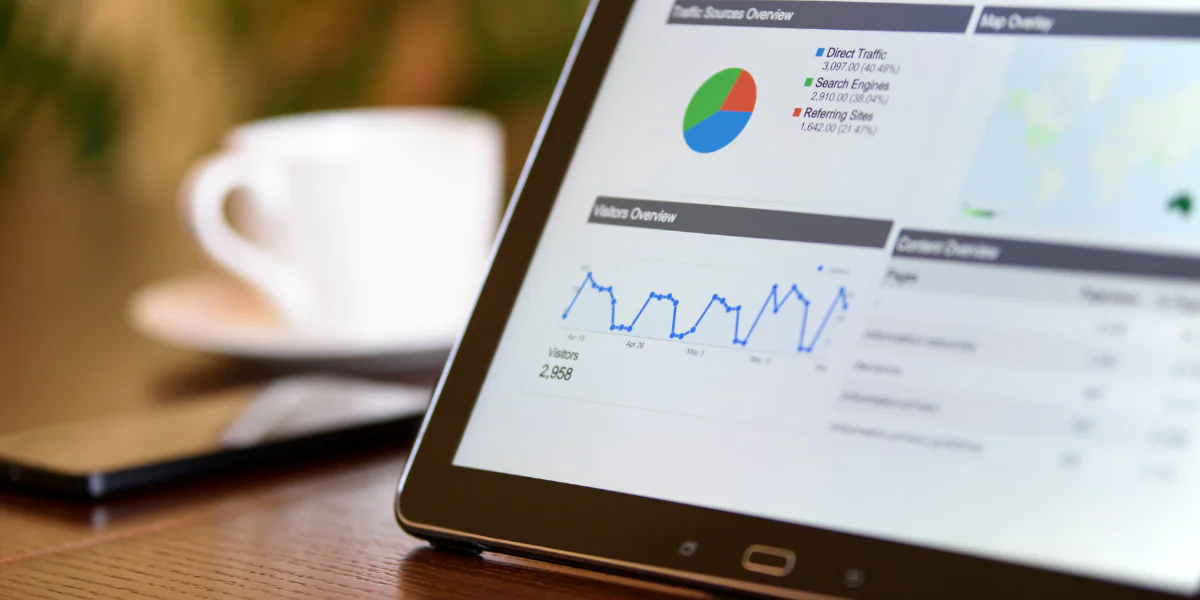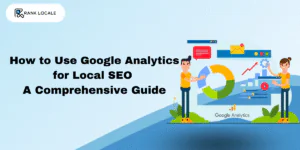Google Analytics is a powerful tracking tool. It helps businesses to track and analyze website traffic. It offers insights that are invaluable in optimizing online performance. Google Analytics helps businesses see how local users interact with their site. This insight allows them to make smart choices. Better choices can boost search engine rankings and improve visibility in local searches.
This guide covers how to use Google Analytics to improve your local SEO. You’ll get useful insights that can help your business online.
Understanding Google Analytics in the Context of Local SEO

Local SEO helps businesses get customers in their local area. First, let’s look at what local SEO means and why it matters. After that, we’ll see how Google Analytics can help with it. Local SEO means making your website and online info better. This helps your business show up in local search results. Use keywords and phrases that include your city or area. This helps people nearby find your products or services when they search online.
Google Analytics is a big help in this process. It gives useful data that can shape your local SEO plan. Businesses can see how users behave, where they are from, and other key details. These things all play a part in how your business ranks in local search results.
Setting Up Google Analytics for Local SEO

Before using Google Analytics to improve your local SEO. You need to make sure your account is set up the right way. First, create a Google Analytics property for your website. Set it up to work well for tracking local visitors and traffic.
- Create different views: In Google Analytics, it’s helpful to make more than one view. For example, you can make a “Raw Data” view and a “Filtered” view. The raw view shows all your traffic, while the filtered one removes useless visits like bots or traffic from your own team. This lets you focus only on people who really visit your site.
- Enable Demographics and Interests: You may understand your visitors in terms of age, gender, and interests; recognize the kinds of local people who access your site; and determine how best to reach them.
Set Up Tracking for Local SEO
Once your Google Analytics is ready, you need to adjust a few settings to track local visitors the right way. Make sure Google Analytics is keeping track of where your visitors are coming from. This helps you understand how your site is doing in certain cities or areas.
- Turn on location tracking: By using geolocation, you can see which places your visitors are coming from. This helps you find out which areas bring the most traffic to your site. You can then focus your SEO efforts on those cities or neighborhoods.
- Set local action goals: If you want more visits, calls, or messages from local customers, set goals in Google Analytics. For example, goals like “form filled out” or “click-to-call” show if people are doing what you want from local searches.
Leveraging Google Analytics Metrics for Local SEO Optimization

1. Analyzing Audience Location Data
One of the most powerful aspects of Google Analytics for local SEO is its ability to provide detailed information about the geographic location of your visitors.
- Use the “Geo” Report: In the “Audience” section of Google Analytics, the “Geo” report allows you to filter website visitors based on their location. By analyzing this data, you can identify which local areas are driving the most traffic to your website.
- Focus on High-Converting Locations: Once you know which geographic regions bring in the most valuable visitors, tailor your local SEO efforts to these areas. For example, if you see a lot of traffic from a specific city, consider optimizing your website with local keywords relevant to that area.
2. Tracking Local Search Queries with Google Search Console Integration
Google Analytics integrates seamlessly with Google Search Console, which can help you track the search queries that bring users to your site. By linking these two platforms, you can gain valuable insights into the keywords that are driving local search traffic.
- Local Keywords Tracking: By analyzing the search queries report, you can identify which local keywords are driving the most traffic to your site. This information can help refine your local SEO strategy by ensuring that you are targeting the right location-specific keywords.
- Identify Opportunities for Keyword Optimization: If you notice that certain local keywords have high impressions but low click-through rates (CTR), it may indicate an opportunity for optimization. Improving your meta tags, on-page content, and headings for these specific keywords can boost your local visibility.
3. Customizing Landing Pages for Local Traffic
Google Analytics provides in-depth insights into how visitors interact with specific pages on your website. By tracking which landing pages attract local users, you can tailor these pages for optimal performance.
- Optimize for Local Intent: Create landing pages that target specific locations, integrating local keywords, landmarks, and region-specific content. For example, if you are a restaurant, you might create a landing page with the title “Best Italian Restaurant in [City Name].”
- Track Local Performance: With Google Analytics, monitor the bounce rate, time on page, and conversion rate for these landing pages. High bounce rates on local pages may suggest the need for further optimization or clearer calls to action.
4. Monitoring User Behavior with Event Tracking
Google Analytics allows you to set up event tracking, which enables you to monitor specific actions users take on your website. For local SEO, event tracking can provide valuable insights into how local users are interacting with your site.
- Track Phone Calls and Form Submissions: By setting up event tracking for local actions like phone calls or contact form submissions, you can better understand how local users are engaging with your business. These events are important local SEO conversion signals that can inform your ongoing strategy.
- Custom Local Actions: You can also track other local-specific actions, such as store locator searches or clicks on your Google My Business listing, helping you refine your approach to local SEO.
Using Google Analytics Reports to Improve Local SEO Performance

1. Custom Reports for Local SEO Insights
Google Analytics allows you to create custom reports that focus specifically on local SEO data. By customizing reports, you can streamline your analysis and focus on the most important metrics for local performance.
- Create a Local Traffic Report: Set up custom reports to track metrics like organic search traffic from specific regions or the performance of your local landing pages. This will provide a more tailored view of your local SEO efforts.
- Measure Conversion Rate by Location: Track how visitors from different locations are converting on your website. This data will highlight which geographic areas are yielding the best return on investment and where you need to invest more resources for local SEO.
2. Setting Up Alerts for Local SEO Performance
Google Analytics allows you to set up custom alerts for specific metrics, including location-based performance. This feature is beneficial for staying on top of your local SEO efforts in real-time.
- Set Alerts for Local Traffic Spikes: If there is an unexpected increase in local traffic, an alert can notify you of the surge, allowing you to investigate the cause. This could indicate a successful local marketing campaign or a trending keyword, which you can capitalize on.
- Monitor Drop-offs in Local Conversions: Set up alerts to notify you if there’s a significant drop in local conversions, prompting you to take action before this impacts your overall SEO efforts.
Integrating Google Analytics with Other Local SEO Tools

While Google Analytics is a powerful tool for local SEO, integrating it with other local SEO tools can enhance its effectiveness. Combining the insights from multiple platforms provides a more comprehensive approach to improving your local search rankings.
1. Google My Business Insights
Integrating Google My Business (GMB) with Google Analytics can provide deeper insights into how users are interacting with your GMB listing. This integration helps you understand which local users are finding your business through Google Search and Maps, which is a key factor in local SEO.
- Track GMB Conversions: Monitor how users interact with your business’s Google My Business profile, including clicks on your phone number or directions. By analyzing this data, you can adjust your local SEO strategy to better target these interactions.
2. Local Backlink Analysis
Backlinks play a critical role in local SEO, and Google Analytics can track the referral traffic that comes from local sites. Integrating tools like Ahrefs or Moz for backlink analysis alongside Google Analytics will give you insights into which local websites are linking to your content.
- Identify Valuable Local Backlinks: Focus on acquiring backlinks from local business directories, newspapers, blogs, and other regional websites. Google Analytics can help you measure the effectiveness of these backlinks in driving local traffic.
Conclusion
Google Analytics is an essential tool for local SEO. It helps you track where your visitors are coming from and how they interact with your site. By using the Geo report, tracking local keywords, and setting up goals for local actions, you can improve your local SEO performance.
Custom reports and event tracking give you deeper insights into how your local SEO efforts are working. By integrating Google Analytics with other tools like Google My Business and backlink analysis tools, you can create a more effective local SEO strategy.
Need help using Google Analytics to boost your local SEO? Let Rank Locale help you. Our team makes local SEO simple and effective—so you can grow your business faster.





